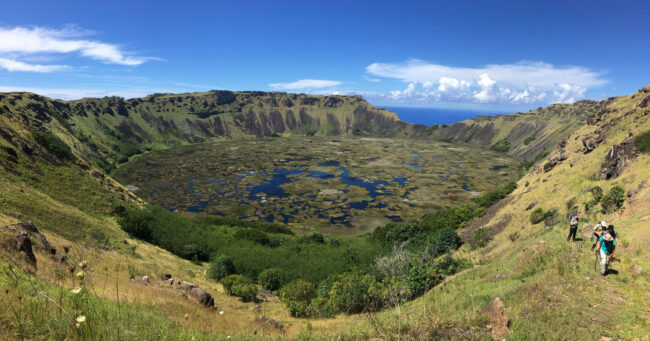paleoclimatology
-

What Really Happened on Easter Island? Ancient Sediments Rewrite the “Ecocide” Story
A new study challenges long-held narratives of societal “collapse,” instead showing that Rapanui communities adapted to profound climate stress with resilience and innovation.
-

Learning From Tree Rings: An Interview With Nicole Davi
A dendrochronologist explains how tree rings can teach us about our past, present, and future.
-

Glacial Ice Cores Reveal 15,000 Year Old Microbes
Ancient ice contains a rich microbial record going back thousands of years. Recent advances have provided tools to study their genes and evolution, but climate change threatens to erase this frozen archive.
-

Ancient Peoples in Patagonia Who Adapted to Changing Climate Offer Insights for Today
Fish bones reveal the seasonal fishing patterns of Patagonians thousands of years ago, illustrating how prehistoric communities adapted to their environments.
-

How Changes in Climate Impacted Ancient Civilizations
William D’Andrea studies past climates to see how societies such as the Vikings and the Rapanui of Easter Island dealt with environmental change. His work may help us adapt to a hotter future.
-

Maureen Raymo on Lamont’s Living Library of Earth History
The paleoclimatologist and marine geologist talks about why the miles and miles of marine sediment samples in Lamont’s Core Repository are so important.
-

Pratigya Polissar Sees Landscapes Changing Through a Microscope
The word fossils typically conjures images of T-Rexes and trilobites. Pratigya Polissar thinks micro: A paleoclimatologist, he digs into old sediments and studies molecular fossils—the microscopic remains of plants and animals that can tell us a lot about what was living in a particular time period.
-

Indonesian Corals Shed Light on Climate System
A new coral salinity record shows that the location of the most significant hydroclimatic feature in the Southern Hemisphere, the South Pacific Convergence Zone, influences a major Pacific Ocean current.
-
Most of Greenland Ice Melted to Bedrock in Recent Geologic Past, Says Study
Finding Suggests the Ice Sheet Is More Vulnerable Than Thought

AGU25, the premier Earth and space science conference, takes place December 15-19, 2025 in New Orleans, Louisiana. This year’s theme—Where Science Connects Us—puts in focus how science depends on connection, from the lab to the field to the ballot box. Once again, Lamont-Doherty Earth Observatory and Columbia Climate School scientists, experts, students, and educators are playing an active role, sharing our research and helping shape the future of our planet. #AGU25 Learn More
